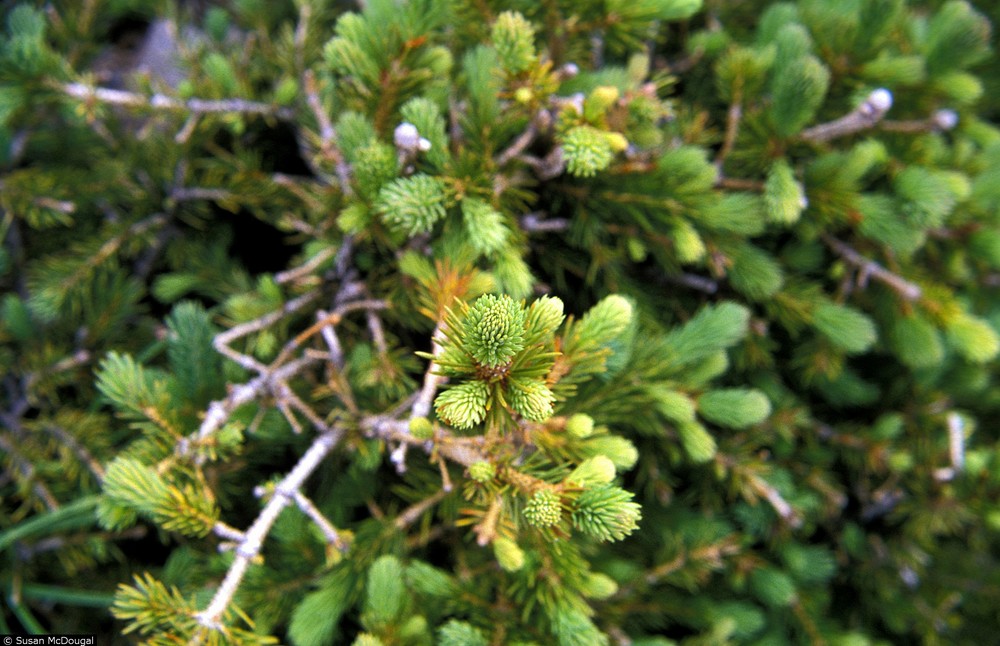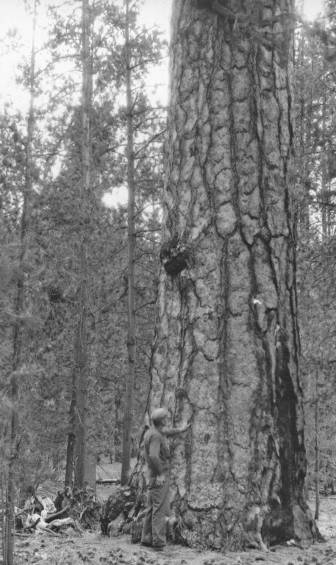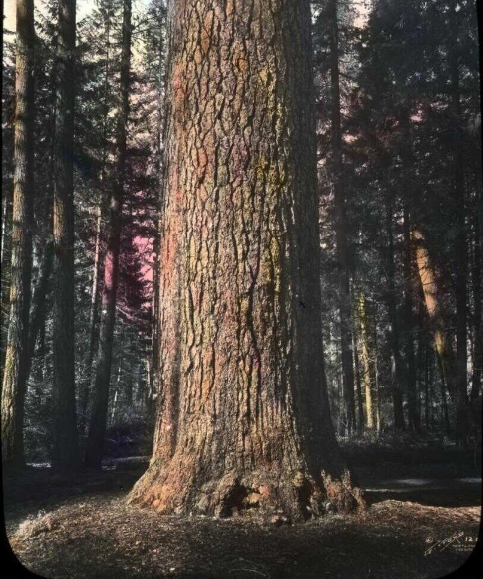Whitebark pine (Pinus albicaulis) is arguably Oregon's quintessential timberline tree. The five-needle pine grows under the harshest of environmental conditions, frequently as a low twisted krummholz shrub; a small twisted tree; or a multistemmed clump of trees so close that they appear to be one. For centuries, Native people used whitebark pine seeds for food. The trees also play an important ecological role in stabilizing soil and providing food and habitat for wildlife. People often notice whitebarks more when they are dead and become twisted, silver-gray ghost trees than when they are alive and healthy. Whitebark pines have no commercial timber value, but they do have considerable aesthetic value.
In 1855, John S. Newberry, a botanist on an expedition for the Williamson Pacific Railroad Survey, collected the type specimen of the whitebark pine in the Cascade Mountains of Oregon Territory. In 1863, George Engelmann, a St. Louis physician and botanist and the person the Engelmann spruce honors, named the whitebark pine Pinus albi (= white) caulis (= stem).
Whitebark pine grows in scattered populations at high elevations in the Coast Mountains and Rocky Mountains of western Canada; the Cascade Range through Washington, Oregon, and California; the Klamath Mountains; and the Sierra Nevada. The trees can also be found in the high mountains of northeast Oregon; the eastern Olympic Mountains; several Nevada mountain ranges; and the Rocky Mountains of Idaho, western Montana, and northwest Wyoming. It is easy to see whitebark pine in Oregon on the rim of Crater Lake.
Whitebark pines live at high elevations under harsh, cold, windy conditions. They are totally dependent on a bird, the Clark's nutcracker (Nucifraga columbiana), for seed dispersal. The large black-and-white crowlike birds collect and cache large nutrient-rich, wingless seeds that Whitebark pines produce. They break into ripe cones, fill their throat pouches with seed, and then fly off and bury them in caches of one to fifteen seeds for future use. The cached seeds that are not eaten often germinate singly or in clusters, which accounts for some trees having multiple stems as adults. In the Rocky Mountains, red squirrels also collect the cones and hoard them in large numbers. Many of those cones are found by grizzly and black bears, who gorge themselves on the high-calorie food in preparation for winter.
The Oregon champion whitebark pine, at 72 feet tall and nearly 6 feet in diameter, grows in the Eagle Cap Wilderness of the Wallowa–Whitman National Forest in northeast Oregon. The national champion whitebark, near Custer, Idaho, is 65 feet tall and a little over 7 feet in diameter. Individual trees can have a lifespan of up to 500 years and sometimes more than 1,000 years. The oldest known whitebark pine, which is more than 1,270 years old, is in the Sawtooth National Forest in Idaho.
This five-needle pine suffers from the same survival problems as its relatives, the sugar pine and the western white pine. Whitebark pine is susceptible to that alien pine-killer, white pine blister rust, and to attack by native mountain pine beetles. It is also susceptible to lack of fire, as decades of fire suppression have allowed subalpine fir and other shade-tolerant species to out-compete whitebark pine.
Global climate change is likely altering conditions in high-elevation ecosystems where whitebark pines grow, although it is difficult to predict the impacts those changes will have on the species. Climate models predict that increases in temperature may lead to decreases in suitable habitat at lower elevations, but that change could be offset by colonization into new habitat at higher elevations as treelines increase or in habitat north of the species’ current range. The effects of climate change on white pine blister rust and mountain pine beetles are also uncertain. Climate change was a contributing factor to the December 2022 decision by the U.S. Fish and Wildlife Service to list whitebark pine as Threatened under the Endangered Species Act.
-
Whitebark pine with a Clark's Nutcracker, Mount Rainier National Park, 2013.
Courtesy Walter Siegmund, 2013, Wikimedea Commons
-
![]()
A group of Whitebark pines, 2001.
Courtesy Ryan Berdeen, US Forest Service
Related Entries
-
![Climate Change in Oregon]()
Climate Change in Oregon
Within a few hundred miles in Oregon, you can see snowy volcanoes, parc…
-
![Engelmann Spruce]()
Engelmann Spruce
With its stiff, sharp-pointed needles and scaly bark, Engelmann spruce …
-
![Lodgepole pine]()
Lodgepole pine
Oregon's only native two-needle pine, Pinus contorta, commonly called l…
-
![Ponderosa pine]()
Ponderosa pine
Ponderosa pine (Pinus ponderosa)—also known as yellow, western yellow, …
-
![Sugar pine]()
Sugar pine
Sugar pine (Pinus lambertiana) is one of the great conifers of the west…
Map This on the Oregon History WayFinder
The Oregon History Wayfinder is an interactive map that identifies significant places, people, and events in Oregon history.
Further Reading
Champion Tree Registry.
https://www.championtreeregistry.com/oregon-registry
Arno, S.F. and R.P. Hammerly. Northwest Trees: identifying and understanding our native trees. Revised Ed. Seattle: Mountaineers, 2007.
Jensen, E.C., C.R. Ross. Trees to Know in Oregon. Revised Ed. Corvallis: Oregon State University Extension Service, 2005.
McLand, S.C., and S.N. Aitken. “Whitebark Pine (Pinus albicaulis) Assisted Migration Potential: Testing Establishment North of the Species Range. Ecological Applications 22:1 (2012): 142-53.
Moerman, D.E. Native American Ethnobotany. Portland, Ore.: Timber Press, 1998. p. 927.
U.S. Fish and Wildlife Service. https://ecos.fws.gov/ecp/species/1748.
U.S. Forest Service. https://www.fs.usda.gov/database/feis/plants/tree/pinalb/all.html#169.







